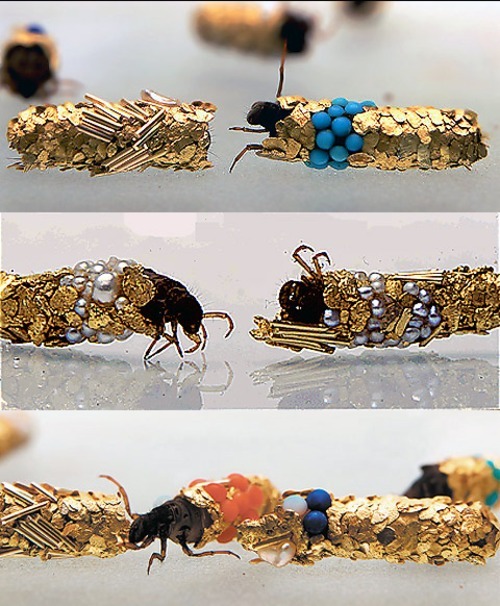What can we learn about a person just from looking at their DNA? As our knowledge of genetics continues to grow, we may even be able to figure out what they look like. Research published in Nature looked at the genome of an ancient human using 4,000 year old hair that had been preserved in Greenland’s permafrost. From looking at genes that cause known traits, we can learn a lot about his appearance.
- Male
- Type A+ blood
- Brown eyes
- Darker skin
- Stocky body
- Dry earwax
- Shovel shaped teeth
- Thick, dark hair
- Tendency toward baldness
 Okay, as an aside: Who is the lucky artist who gets to draw a reconstruction of an ancient human, or the feather patterns on dinosaurs? Is this someone’s profession, or does a grad student do it? Maybe I can finally find a way to combine my art skills with my biology skills!
Okay, as an aside: Who is the lucky artist who gets to draw a reconstruction of an ancient human, or the feather patterns on dinosaurs? Is this someone’s profession, or does a grad student do it? Maybe I can finally find a way to combine my art skills with my biology skills!
Anyway, it’s pretty cool that we’re able to learn about the actual physical appearance of someone just from their genes. Think about the implications in forensics cases when all that’s left is tissue that’s beyond identification. But that’s not the thing that made this paper Nature-worthy. All of these genotypes are very similar to modern Siberians, which tweaks our current understanding of human migration. Jerry Coyne summarizes it well over at his wonderful blog, Why Evolution is True:
Oh, and the really interesting result is this: the DNA suggests that the individual had components of genes still present in East Asian and Siberian populations, but not found in modern-day Inuits or people from South and Central America. This suggests that there were two separate invasions of North America from Asia: the one that gave rise to native Americans, South Americans, and modern Inuit on the one hand, and that leading to the presence of Saqqaq in Greenland. Those latter individuals probably came across the Bering Strait, and then, hugging the Arctic, made their way eastward across North America and then to Greenland.
That conclusion is of course tentative because it’s based on only this single genome. Still, based on the sequence, and the tentative phylogeny showing that this individual’s ancestors split off from the ancestors of their closest living relatives (the Chukchis of eastern Siberia) about 5,000 years ago, anthropologists may have to revise their conclusion that there was one invasion of North America from eastern Asia around 18,000 years ago.
Very neat stuff! Though I would like to see a study using modern humans to see how accurate these sorts of predictions are. Take maybe ten individuals with various phenotypes, sequence their genomes, have the researchers try to reconstruct their appearance without previous knowledge of what they look like, send it off to an artist, and see how close we can get! I’m not sure what profound result this would show other than if this method is useful or not – just seems like a really cool thing to try out. Can’t we do science for fun every once in a while?




